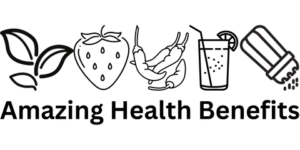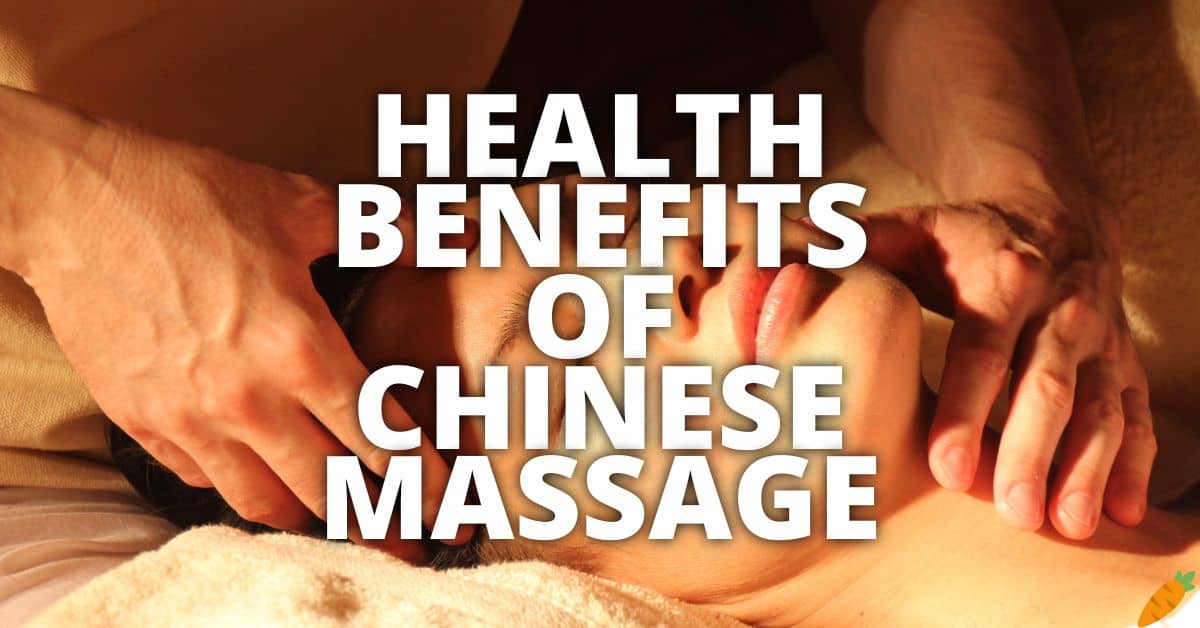It’s a lovely day to find out about the potential health benefits of Chinese massage.
🤔 What is Chinese massage?
Chinese massage, often referred to as “Tui Na,” is a form of therapeutic bodywork that has been practiced in China for over 2,000 years.
It combines principles from traditional Chinese medicine with techniques of manual manipulation and pressure.
Practitioners use their fingers, hands, elbows, and sometimes tools to apply pressure, knead, and tap on specific points on the body.
The aim is to balance the body’s energy, or “qi,” alleviate pain, and promote healing and relaxation.
Besides treating physical ailments, Chinese massage is also used to maintain general wellness and prevent illness.
📝 Here’s a list of the potential health benefits of Chinese massage:
- Alleviation Of Pain
- Better Blood Flow
- Relief From Stress
- Boosted Immunity
- Increased Flexibility
- Qi Harmonization
- Gut Health Enhancement
- Body Cleansing
- Better Respiratory Function
- Enhanced Sleep Quality
- Faster Healing From Injuries
Please continue reading if you want to learn more.
1. Pain Relief (My Favorite Potential Health Benefit Of Chinese Massage)
Chinese massage employs a combination of acupressure points, kneading, and stretching techniques aimed at pain relief.
Targeting specific areas, practitioners work to release muscle tension and reduce inflammation in affected regions.
For instance, chronic back pain can be addressed by manipulating certain points along the spine and surrounding muscles.
Similarly, for issues like neck pain or headaches, the massage focuses on the upper body, cervical vertebrae, and head regions.
By addressing the root causes and not just the symptoms, Chinese massage provides a holistic approach to pain management.
2. Improved Circulation
Chinese massage emphasizes the importance of a harmonious flow of qi, or energy, throughout the body.
By applying targeted pressure and manipulation techniques, practitioners aim to remove blockages and ensure unhindered circulation.
Enhanced blood flow ensures that oxygen and vital nutrients are efficiently delivered to cells, aiding in cellular health and regeneration.
Furthermore, improved circulation helps in the swift removal of waste products, reducing the risk of inflammation or swelling.
As a result, individuals often experience a feeling of warmth, revitalization, and increased energy after a session.
3. Stress Reduction
Chinese massage delves deep into the intricate connection between the mind and body.
By manipulating specific acupressure points and muscle groups, the massage promotes the release of tension both physically and mentally.
As the body relaxes, the mind tends to follow, resulting in a reduction of stress hormones such as cortisol.
Furthermore, the rhythmic movements and pressure techniques employed can lead to a meditative state, further enhancing relaxation.
Over time, regular sessions can offer a profound sense of calm and balance, helping to combat daily stressors.
4. Enhanced Immune System
Chinese massage plays a role in fortifying the body’s natural defenses.
Improved circulation, a direct outcome of the massage, ensures efficient delivery of immune cells throughout the body, enabling quicker responses to pathogens.
By reducing stress, the body can better regulate its inflammatory response, preventing overreactions that can be detrimental.
A consistent reduction in stress levels also means fewer stress hormones, which, at high levels, can suppress the immune system.
Therefore, by improving circulation and managing stress, Chinese massage can contribute to a more robust and reactive immune system.
5. Improved Flexibility
Chinese massage focuses on holistic body wellness, which encompasses joint and muscle health.
By employing techniques that stretch and elongate muscles, the therapy combats stiffness and promotes a greater range of motion.
The manipulation of joints during the massage helps release synovial fluid, aiding in smoother joint movements.
Additionally, working on muscle knots and tightness helps prevent the shortening of muscle fibers, allowing for better flexibility.
With consistent sessions, individuals can expect a noticeable improvement in their mobility, posture, and overall flexibility.
📙 Hula dancing may also aid in flexibility improvement. More information about its health benefits can be found on this page.
6. Balance Qi
At the heart of Chinese massage is the principle of balancing qi, the vital energy flow within the body.
Disruptions or blockages in this flow are believed to result in physical and emotional ailments.
By applying pressure to specific acupressure points, practitioners work to restore and harmonize the flow of qi.
A balanced qi is associated with a state of well-being, optimal organ function, and emotional stability.
Therefore, through targeted massage techniques, Chinese massage seeks not just to address isolated issues but to promote holistic health by balancing this vital energy.
7. Digestive Health
Chinese massage recognizes the gut’s crucial role in overall health.
By focusing on specific pressure points and meridians linked to the digestive system, practitioners aim to stimulate and enhance the digestive process.
Massaging the abdomen can help relax the muscles, facilitating smoother bowel movements and potentially relieving issues like constipation.
Additionally, by improving the flow of qi in the digestive tract, it can help alleviate symptoms of bloating, gas, and indigestion.
As a holistic approach, Chinese massage not only addresses symptoms but also seeks to restore the body’s natural digestive rhythm and balance.
8. Detoxification
Chinese massage is deeply rooted in the principle of holistic wellness, in which detoxification plays a significant role.
Through targeted manipulation techniques, the massage promotes enhanced blood circulation, helping the body expedite the removal of waste and toxins.
Lymphatic drainage is also encouraged, further aiding in the expulsion of accumulated waste from cellular processes.
By releasing muscle tension and stimulating vital organs, the body’s metabolic functions are optimized, enhancing its natural detoxification pathways.
Over time, consistent sessions can lead to a clearer system, potentially resulting in improved energy levels, clearer skin, and better overall health.
9. Respiratory Health
Chinese massage holds a comprehensive view of the body, including the respiratory system.
By focusing on certain acupressure points linked to lung function, practitioners aim to strengthen respiratory capacity and clear obstructions.
Techniques involving the chest and upper back can assist in loosening mucus, promoting its expulsion, and potentially offering relief from conditions like bronchitis.
For individuals with asthma, these massage methods can aid in relaxing the muscles around the airways, reducing constriction.
As a holistic remedy, Chinese massage seeks to enhance respiratory function, offering a complementary approach to conventional treatments for respiratory ailments.
📚 Efficacy And Safety Of Tuina For Treatment Of Pediatric Recurrent Respiratory Tract Infections
10. Sleep Improvement
Chinese massage directly addresses the body’s stressors that can impede restful sleep.
By targeting specific acupressure points, the massage fosters a sense of relaxation, helping to quiet the mind and prepare the body for sleep.
Muscle tension, often a culprit behind sleep disruptions, is alleviated, further enabling deeper and more restorative rest.
The rhythmic movements of the massage can also induce a state of calm, akin to a meditative state, conducive to falling asleep.
Over time, regular sessions can assist in resetting the body’s natural sleep-wake cycle, leading to improved sleep quality and duration.
📙 Buckwheat pillows may aid in the improvement of sleep. This page contains more information about its health benefits.
11. Injury Recovery
Chinese massage plays a pivotal role in the recuperation process after an injury.
By enhancing circulation to injured areas, the massage facilitates the delivery of essential nutrients, promoting cellular repair.
Hands-on manipulation aids in reducing inflammation and swelling, two common side effects of soft tissue injuries.
Additionally, by gently working on and around the injured area, the massage helps prevent the formation of scar tissue, which can limit mobility.
Incorporating regular massage sessions during the recovery phase can therefore lead to faster healing, reduced pain, and improved range of motion.
💡 Conclusion
Steeped in ancient tradition and holistic understanding, Chinese massage, especially the Tui Na method, offers a plethora of health benefits that transcend mere relaxation.
From bolstering the immune system and enhancing circulation to facilitating injury recovery and ensuring restful sleep, its multifaceted approach addresses both the body and mind.
By focusing on balancing the body’s vital energy, or qi, this therapeutic technique promotes overall well-being, making it a valuable addition to modern health routines.
As more people seek holistic and integrative health solutions, the timeless wisdom of Chinese massage stands as a testament to the power of traditional healing in our contemporary world.
Whether you’re grappling with physical ailments or simply in pursuit of wellness, Chinese massage promises a journey towards a balanced and rejuvenated self.
😊 My favorite potential health benefit of Chinese massage is its ability to alleviate pain.
Given its focus on promoting circulation and reducing muscle tension, it could be an effective tool for managing the discomfort and inflammation associated with my arthritis.
What’s your favorite potential health benefit of Chinese massage?
You can also check out posts on this page about the potential health benefits of other massages.
Please share this post with your family and friends if you find it interesting.
Thank you!
Be healthy 💪 and stay safe 🦺!
⛑️ Safety First
While Chinese massage offers potential health benefits, it’s essential to approach it with caution.
Individuals with certain conditions, like severe osteoporosis, recent fractures, or open wounds, should avoid it.
Given the diverse nature of these benefits, some may be based primarily on anecdotal evidence.
As always, before starting any therapeutic practice, especially if managing a health condition, it’s recommended to consult with a doctor.
Additionally, it’s prudent to research and seek advice from a professional practitioner to ensure its suitability for your individual needs.
📋 Summary
| Potential Health Benefits Of Chinese Massage | Details |
| Pain Relief | Alleviates various types of pain by targeting muscle tension and promoting relaxation. |
| Improved Circulation | Stimulates blood flow throughout the body, ensuring efficient delivery of nutrients to cells. |
| Stress Reduction | Provides relaxation for both mind and body, thereby reducing overall stress levels. |
| Enhanced Immune System | By promoting better circulation and reducing stress, it bolsters the body’s natural defenses. |
| Improved Flexibility | Techniques employed enhance joint mobility and elongate muscles, combating stiffness. |
| Balance Qi | Focuses on the harmonious flow of vital energy within the body to promote overall health. |
| Digestive Health | Addresses and stimulates digestive processes, aiding in the relief of digestive disorders. |
| Detoxification | Facilitates the removal of toxins and waste, promoting a clearer system. |
| Respiratory Health | Techniques can be beneficial for clearing obstructions and strengthening respiratory capacity. |
| Sleep Improvement | Reduces tension and fosters a state of calm, conducive to better sleep quality. |
| Injury Recovery | Promotes faster healing by enhancing circulation to injured areas and reducing inflammation. |
⚠️ Content Disclaimer
The information provided here is intended for general informational purposes only.
It does not constitute professional advice, nor does it replace the guidance of qualified professionals.
Readers are encouraged to consult with experts and conduct their own research before making decisions based on the content.
The author and publisher disclaim any liability or responsibility arising from inaccuracies, omissions, or any actions taken based on the presented information.

